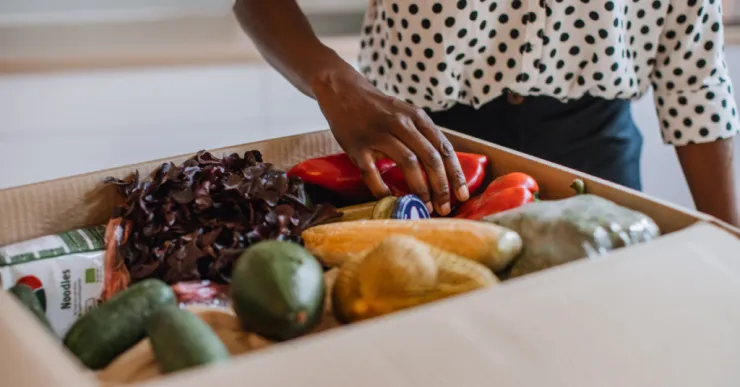Necessity is the mother of invention. At Flipdish, we’ve seen first hand just how true that is over the past year. We’ve worked with hundreds of food businesses to roll out new products, new services, and new ways to do business. And some of those changes and developments are almost certainly here to stay.
One in particular that we see a bright future for is the deliverable meal kit. We believe that a whole host of factors mean meal kits will represent a key revenue stream for all sorts of food businesses, from high-end restaurants to national pizza and burger brands, well into the future. And Flipdish is here to help them make that happen.
What is a meal kit?
Just in case there’s any doubt or confusion, a meal kit is a package of ingredients, delivered cold to the consumer, with instructions for turning those ingredients into a restaurant-grade meal at home. That’s it.
Of course ‘ingredients’ will usually include sauces already prepared by the restaurant, and in some cases salads and desserts fully prepared before delivery. A well-designed meal kit will involve maximum impact for minimum effort on the part of the recipient.
In many ways meal kits are a win-win for restaurants and their customers – and will continue to be so when Covid-19 is a distant memory.

For the restaurant the benefit is obvious. Meal kits are an opportunity to sell more meals either when the restaurant is closed, or indeed when it is open. Many great kitchens are limited by the number of covers in the physical restaurant after all. As such meal kits represent a fantastic additional revenue stream that requires almost no additional investment.
For the customer, meal kits offer the ability to sample restaurant quality food in the comfort of their own home, without the need to travel, and perhaps enjoyed with a bottle of their own wine from the cellar or fridge. For some, living away from the city, this is simply an experience they cannot get any other way.
A great amount of any chef’s skill is in designing a menu and sourcing ingredients rather than cooking the steak, so the customer can usually be confident of a great culinary experience. And of course, many of us enjoy the chance to cook ourselves with really great ingredients and none of the complicated stuff.
All these factors suggest that meal kits are here to stay. But if you’re a restaurant owner or chef looking to dip your toe into this market, what is the best way to go about it? Read on.

Tips for building a meal kit offering
Setting up a meal kit business is easy. In fact, if you follow these four simple tips you will find it almost impossible to go wrong (assuming your food is good, which is probably safe to say).
1. Keep it simple
This is rule number one for a reason. If your customer is cooking at home, make it as easy as possible for them. Design the menu to be effectively idiot-proof, so that clear instructions and common sense are all that is needed. Don’t expect too much, and don’t leave your customer with a mountain of washing up. That way they’ll love the experience and come back for more.
2. Focus on what you do best
You’re a restaurant, not a grocery store. Keep your menu short and sweet, with easy to understand options for the customer. Many of your initial orders will be people trying a meal kit for the first time, so let them order with confidence rather than sowing confusion. A limited menu also makes it easier to manage inventory and reduce waste of course.
3. Design for delivery
Your food has to get to the customer in the best possible condition. Part of that responsibility lies with your delivery service of course. Let’s leave the student on a bicycle for the local chip shop. But equally, your meal kit should be designed to be delivered across large distances, and for extended periods of time. That’s the beauty of cold delivery – but it does mean you need to ensure what you send will arrive in great condition at the end of the journey.
4. Make it easy to order
The best meal kits in the world won’t sell if customers find it hard to buy them. You want to make it as easy as possible to order, which means a solution like Flipdish that is designed and optimised to maximise conversion, and gives you total control of how your menu is displayed. And under no circumstances attempt to offer meal kits through food aggregators. The success of this offering is entirely dependent on your brand, and it should have your name on it.
Good luck!


